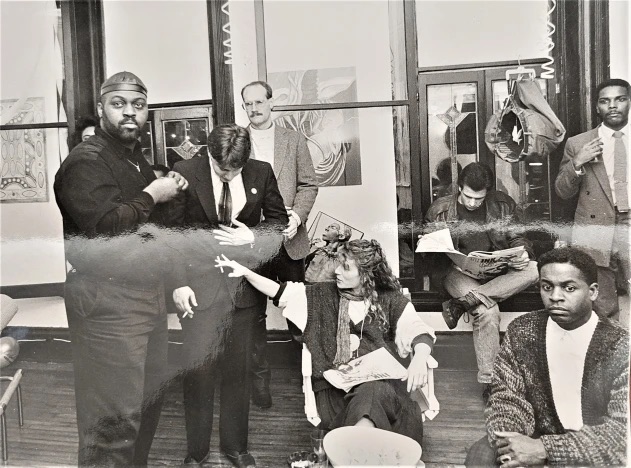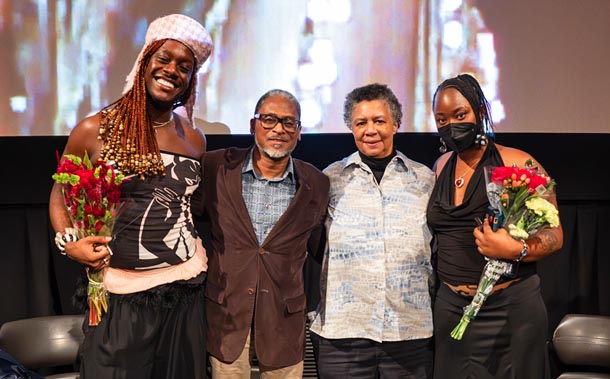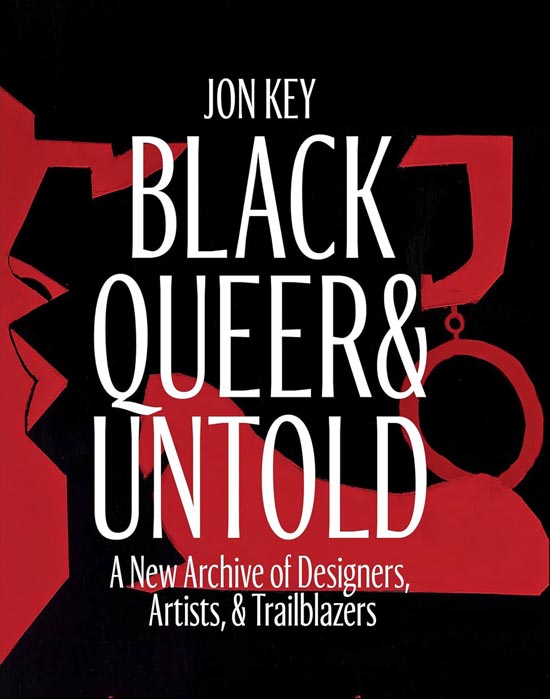
by Ken Hare, courtesy of Defending Chicago –
“… Someone can be famous because THING thinks they’re famous.”
In 1987, three Black men from the South Side of Chicago created the first of two self-published ‘zines documenting Black underground art, history, and life. Think Ink, the brainchild of Robert T. Ford, Trenton Adkins, and Lawrence (Larry) Warren, was a large 10.5″ by 16″ magazine similar in format to Andy Warhol’s Interview magazine.
According to a September 1993 Owen Keehnen interview published in Outlines newspaper, Ford, the publisher, and editor stated that Think Ink was: “… very Black and not very gay …” A bold three-thousand copies of Volume One, Issue “O” was printed, initiating its Nov. 14, 1987, release. And a celebration was held at Wholesome Roc Gallery & Cafe to a full house.
I appeared on the cover in a satirical homage to Roots, the Alex Haley miniseries depicting the brutality of slavery, starring Levar Burton as Kunta Kinte, that captivated the nation in 1977. Adkins did the styling, and Paul Mainor of Mainor-Martin photography captured the now-iconic image.
The second issue, published in the spring of 1988, Volume One, Issue “1,” featured local model Aisha Mays on the cover shot by the late fashion photographer Ernest Collins. Adkins did the makeup, and I did sleek hair in a nod to Harlem’s 1920s Jazz Age, which was hot back then. Writing for Artforum in 2018, art historian Solveig Nelson declared it “evokes both the Jazz Age and vogueing scene of the ’80s, characteristically bringing together different instances of cutting-edge glamor in African American culture.”
Although it was the trio’s first experiment in publishing, with Adkins and Warren serving as co-editors, Think Ink ceased publishing after two issues due to a lack of funding. Nevertheless, its impact was far-reaching, featuring interviews with Dr. Margaret Burroughs, founder of the DuSable Museum of African American History; DJ and music producer Frankie Knuckles; fashion designer Isiah and more. All fused together with art, poetry, fashion, music reviews, and Adkins’ “TEE” gossip column in a way never before seen in the Black community.
Nelson says Think Ink’s voice was “… loud & varied embracing cultures and countercultures of thinkers male/female/black/white/straight/gay/etc.” And independent culture and fashion magazine Document Journal writer DeForrest Brown Jr. refers to it as a “post-soul aesthetic” stemming from the Black Power and Black Arts Movements.
Short-lived, yet ahead of its time, the experience yielded “good information,” as Warren would put it years later. The lessons learned were priceless and prepared them for their subsequent publication focusing exclusively on the underground Black gay community, thus catapulting their names into the annals of history.
Read the full article about THING the Mega ’Zine at defendingchicago.wordpress.com/2022/08/02/op-ed-three-brothers-two-zines-one-legacy.



